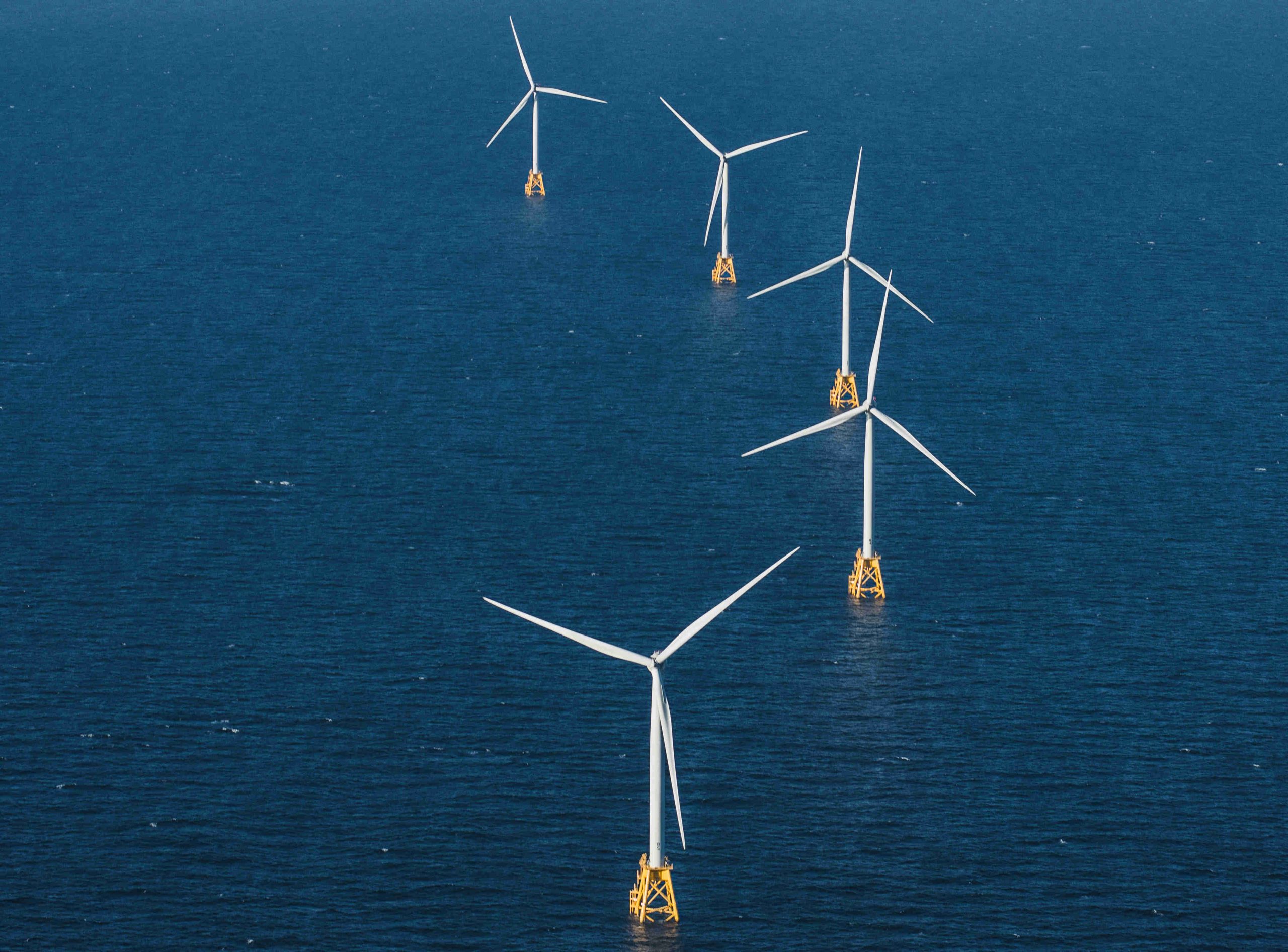-
 play_arrow
play_arrow
Radio Rehoboth
What’s the next steps for Delaware’s offshore wind energy plan


DOVER — Delaware has officially received the green light to start seeking ways on how to capture wind energy now that Gov. John Carney has signed Senate Bill 265 into law.
What that means for the State Energy Office, the agency tasked with drafting a plan on whether the First State would buy energy from an existing project through a power purchase agreement or build its own, is that the work has just begun.
Delaware is mandated to hit 40% renewable energy by 2035 and right now 10% of that portfolio is in-state solar projects and the rest is bought from out-of-state sources. As more offshore wind farms are proposed, Carney has made it clear in his final years in office that he hoped to set the state up in a position so that it could tap into the energy source.
Under SB 265, the State Energy Office is required to work with at least one other energy purchaser for a project that would not cost more than 110% of the Delaware Benchmark Price, which is the average utilities has paid for renewable energy over the past three years.
The key in Delaware’s energy procurement strategy is that it remains flexible enough to meet the ever-changing winds of the market. It also states that it will not buy the energy alone, according to DNREC Principal Planner for Energy Policy Thomas Noyes.
“Delaware’s a small state and this is a big industry. We spent a lot of time trying to find ways to go forward to make offshore wind affordable for our state,” Noyes told the Delaware Business Times. “The market analysis we’re doing will be so important to help decide whether there’s more favorable opportunities to buy smaller pieces of larger projects.”
While the law allows Delaware to seek offshore wind projects, it also allows the state to enter into an agreement with other states in the PJM Interconnection: New Jersey, Maryland, Virginia or Northeast North Carolina. On the other hand, the state can seek proposals to build its own offshore wind farm and claim the energy credits alone.
“We’ve heard the optimal scale for an offshore wind project is about 1,000 megawatts, and the project off Virginia Beach is 2.5 gigawatts. There’s economies of scale that are achieved once you get to that level. So we’re trying to find a way to work with developers to take advantage of that scale,” Noyes said.
The law also does not lock Delaware into a select timetable to buy wind energy by a certain date, a critical clause as many offshore wind projects including U.S. Wind’s proposal off the coast of Ocean City, Md., was first planned to be in service by 2022. Noyes said that grants the state the ability to talk with developers about specifications on the size and timing of the project to ensure it’s a right fit.

Orsted invested millions in a port near Baltimore and has developed the small Block Island Wind Farm seen here. | PHOTO COURTESY OF ORSTED
Delaware notably does not require an economic development benefits plan, which other states do require and are often celebrated by government officials as job gains for their states. Danish wind farm developer Ørsted, for example, invested millions in a port near Baltimore as well as a steel plant before it ultimately pulled out of its plans for a wind farm off Maryland’s coast.
“We do want to know how many jobs a project could bring, but we’re not baking it in the requirements… because we recognize that not everyone can get everything they want. This flexibility widens the field of opportunity to get the best deal for Delaware,” Noyes said.
It’s unclear what the timeline will be for Delaware officials to act on offshore wind, as the State Energy Office must draft a solicitation and then present it to the Renewable Energy Task Force for its own recommendations.
From there, the state would file a petition with the Delaware Public Service Commission (PSC) to move forward. Once those hurdles have been passed, then Delaware goes to the energy market — and whatever proposals that the state opts to deal with, the PSC has to sign off on it.
Go to Source:https://delawarebusinesstimes.com/news/delawares-offshore-wind-energy-plan/
Author: Katie Tabeling
Written by: RSS
Similar posts
Chart
Top popular

News Briefs 10/17/23
Board of Commissioners Workshop & Special Meeting – November 6

Six Sussex road projects considered in latest CTP
NFL Week 17 highlights: Packers, 49ers, Saints, Steelers win, Cardinals stun Eagles
Knicks vs. Cavaliers prediction, odds, line, spread, time: 2023 NBA picks, Nov. 1 best bets from proven model
Copyright 2023 East Sussex Public Broadcasting, Inc.





